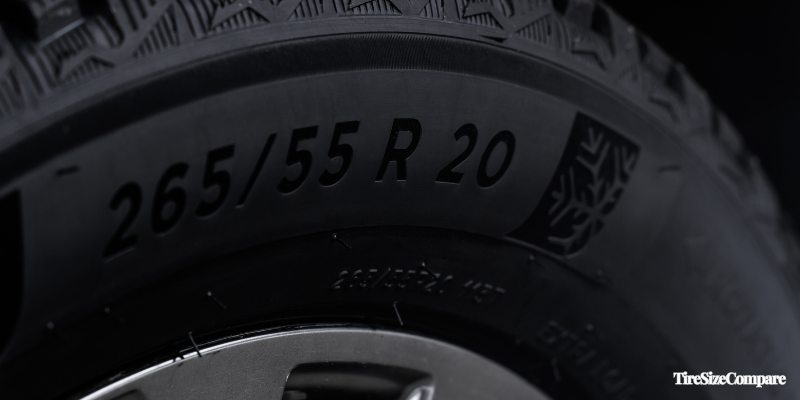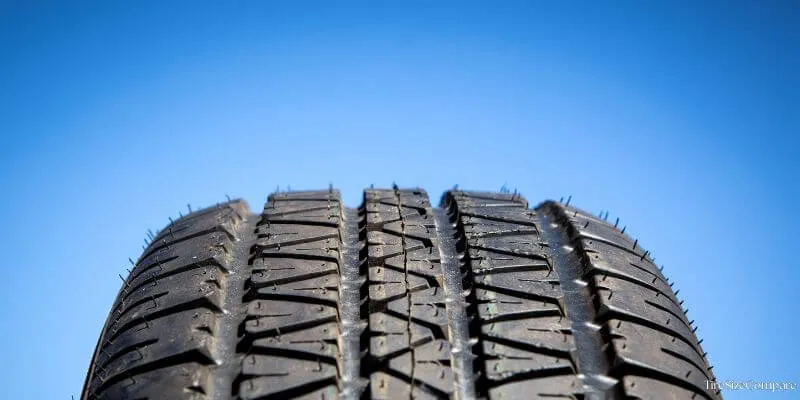How to Read a Tire

Knowing how to read the information on your tire sidewall is essential for vehicle safety and performance. By understanding the various markings and codes, you can maintain the correct tire pressure, ensure your tires are compatible with your vehicle, and know when it’s time for a replacement. Let’s break down the key information found on a tire and what it means for you.
Tire Size and Type
One of the most prominent markings on a tire is the tire size, which is a combination of letters and numbers, such as P215/65R15. Here’s what each part represents:
- P: This letter indicates the type of tire. “P” stands for Passenger, while “LT” means Light Truck.
- 215: The number following the letter is the tire width in millimeters. In this example, the tire is 215 millimeters wide.
- 65: This number is the aspect ratio, which is the height of the tire’s cross-section to its width, expressed as a percentage. A ratio of 65 means the tire’s height is 65% of its width.
- R: The letter “R” indicates the tire’s construction type, which is Radial in most cases.
- 15: The final number is the wheel diameter in inches. This tire is designed to fit a 15-inch wheel.
Load Index and Speed Rating
Following the tire size, you’ll often find the load index and speed rating. The load index is a number that indicates the maximum load a tire can support. For example, a load index of 95 corresponds to a specific weight in pounds, which you can find in a load index chart.
The speed rating is a letter that indicates the maximum speed a tire can sustain. For instance, an “H” rating means the tire can handle speeds up to 130 mph. It’s crucial to use tires with a speed rating that matches or exceeds your vehicle’s requirements.

DOT Code
The Department of Transportation (DOT) code is a series of numbers and letters that indicates the tire’s compliance with DOT safety standards. It also provides information about the manufacturing location and the week and year of production.
The last four digits of the DOT code represent the week and year the tire was made. For example, a code ending in “2420” means the tire was produced in the 24th week of 2020.
UTQG Ratings
The Uniform Tire Quality Grading (UTQG) system provides ratings for treadwear, traction, and temperature resistance. Here’s what each rating means:
- Treadwear: This is a numeric rating that indicates the tire’s wear rate. A higher number means the tire is expected to last longer.
- Traction: Traction grades, such as AA, A, B, or C, indicate the tire’s ability to stop on wet pavement. “AA” is the highest grade, while “C” is the lowest.
- Temperature: Temperature grades, also ranging from A to C, indicate the tire’s heat resistance. An “A” grade means the tire is better at dissipating heat, which can help prevent heat-related failures.
Tread Pattern and Wear Indicators
The tread pattern on a tire affects its traction and handling characteristics. Some patterns are designed for specific conditions, such as wet roads or off-road terrain.
Wear indicators are small bars that appear across the tread when the tire has worn down to a certain point, usually 2/32 of an inch. When these bars become flush with the tread, it’s time to replace the tire.

Additional Markings
Tires may have additional markings that provide more information about their capabilities or intended use. Some common examples include:
- M+S (Mud and Snow): This marking indicates that the tire is suitable for use in muddy and snowy conditions.
- 3PMSF (Three-Peak Mountain Snowflake): Tires with this symbol meet specific snow traction performance requirements and are suitable for severe snow conditions.
- Other Symbols: Manufacturers may include their own specific markings, load range, or ply rating on the tire sidewall.
What Does the Aspect Ratio on a Tire Mean?
The aspect ratio is the height of the tire’s cross-section to its width, expressed as a percentage. A lower aspect ratio means a shorter sidewall, which can provide better handling but a firmer ride.
How Can I Tell if My Tires Are Worn Out?
Look for the wear indicators, which are small bars that appear across the tread when the tire has worn down to 2/32 of an inch. You can also use a tire tread depth gauge or perform the “penny test” to check the tread depth.
Can I Mix Tires With Different Speed Ratings?
It’s not recommended to mix tires with different speed ratings. Always use tires with a speed rating that matches or exceeds your vehicle’s requirements, and ensure all four tires have the same speed rating for optimal performance and safety.
What Does the Dot Code on a Tire Tell Me?
The DOT code indicates the tire’s compliance with Department of Transportation safety standards, manufacturing location, and production date. The last four digits represent the week and year the tire was made.
How Often Should I Replace My Tires?
The lifespan of a tire depends on various factors, such as mileage, driving habits, and storage conditions. As a general rule, tires should be replaced every 6 years, regardless of tread depth. However, if the tread reaches the wear indicators or the tire shows signs of damage, it should be replaced sooner.
Understanding the information on your tire sidewall is crucial for maintaining a safe and reliable vehicle. By knowing how to read tire markings, you can ensure you have the right tires for your vehicle and driving conditions, maintain proper tire pressure, and know when it’s time for a replacement.
Regular tire maintenance and prompt replacement of worn or damaged tires can help keep you and your passengers safe on the road.



